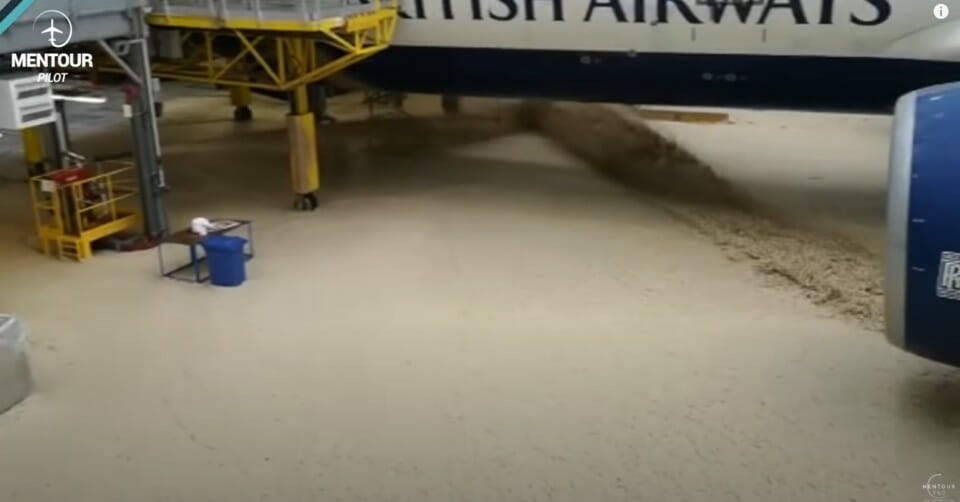Last Sunday, A British Airways maintenance hangar at Heathrow Airport accidentally discharged fire fighting foam on a Boeing 777. Aircraft maintenance hangars are required to have foam fire extinguishing systems to combat fires from flammable liquids, vapors and electrical issues. This post features photos of how foam dumping systems work along with a video explanation from my friend Petter at Mentour Pilot.
Here are some photos from inside the hangar that were tweeted by Aeronews Global.
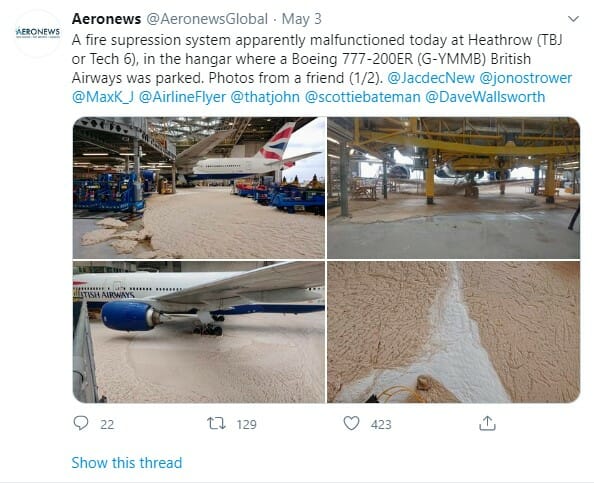
Maintenance Hangar Fire Fighting Systems
These hangars are equipped with fire fighting foam dumps that can quickly fill the hangar floor. These systems are required due to the dangers of flammable liquids and vapors filling the hangar. The foam works quickly to extinguish a fire because it starves a fire of the required oxygen needed to burn. These systems use either a synthetic foam or a protein-based foam that are discharged from ceiling or floor level nozzles. Fire suspension systems are only a part of what airports use in fighting fires, they also use:
- Aircraft Rescue and Fire Fighting (ARFF) trucks,
- Alarm systems and
- High tech personal protective equipment (PPE).
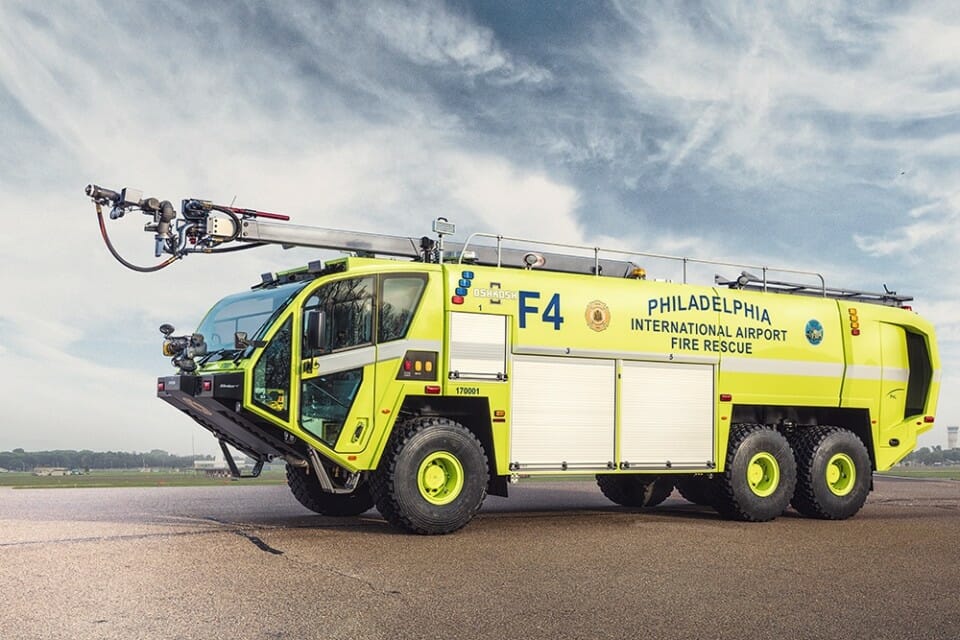
Foam dumping systems are very effective in combating hangar fires. They can completely dispense foam very quickly. This can be dangerous for personnel that are in the hangar. In 2014, a hanger employee in Florida was killed when he lost his way in the foam and died from suffocation.
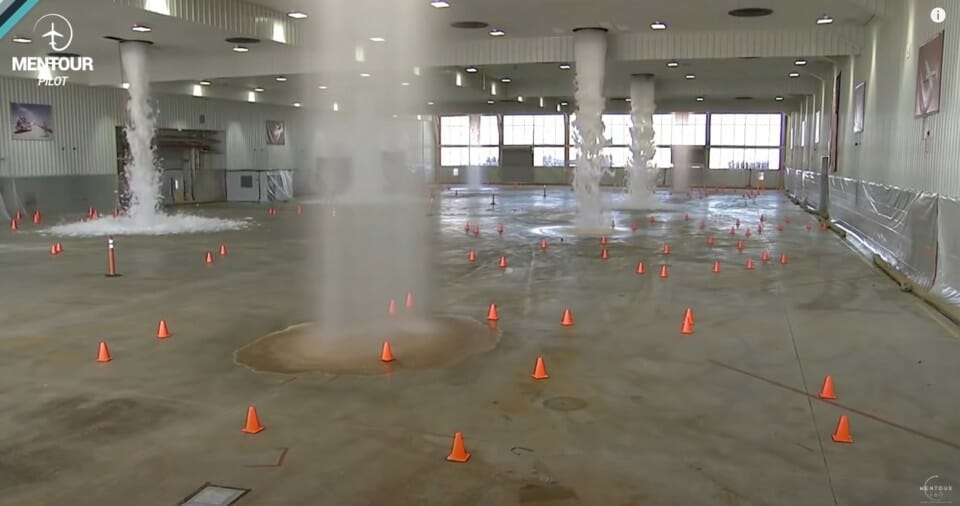
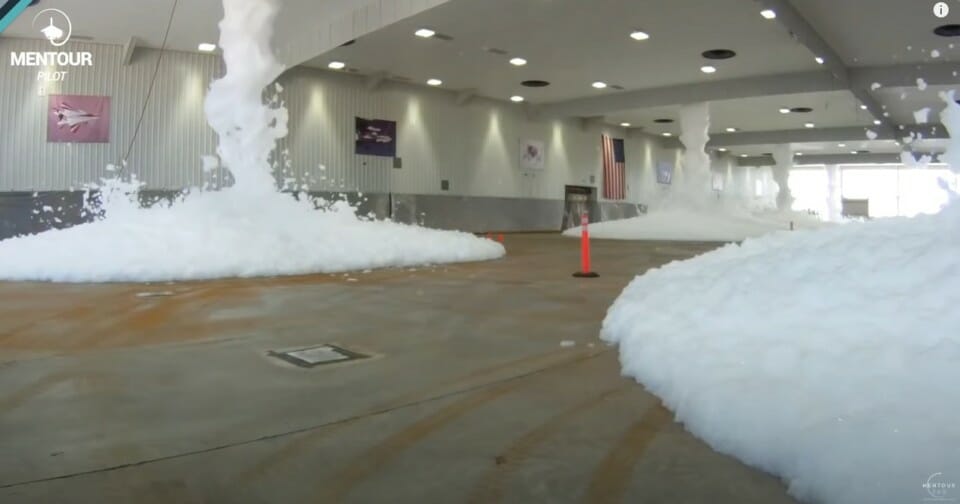
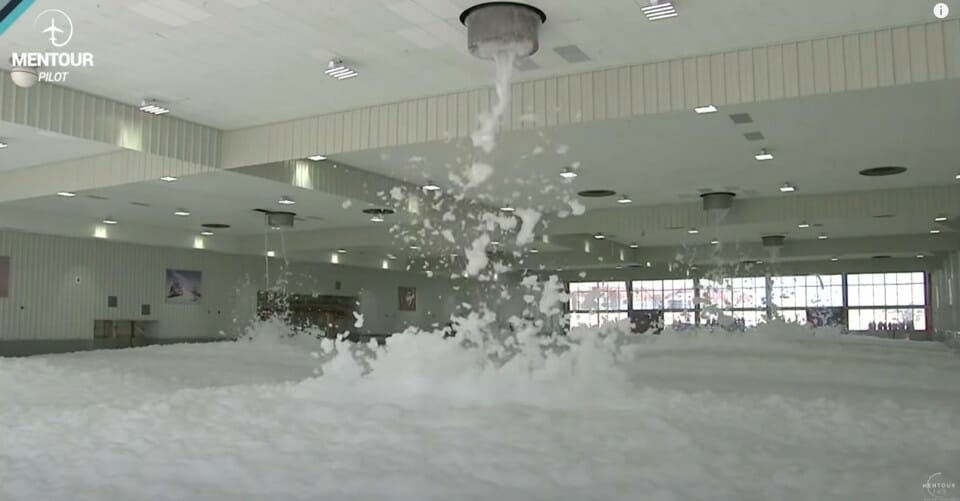
Damage To Aircraft From Accidental Foam Discharges
Besides cleaning up the foam from the hangar floor, the aircraft involved will have to undergo an extensive inspection. The foam can damage the brake systems, tires and seals from the chemical contact with the foam. The engines will have to be thoroughly inspected as well for damage from foam ingestion. This particular accident could cost British Airways anywhere from the high hundreds of thousands of dollars to over $1 million. I had flown an Air Force C-17 medivac orientation flight out of McChord Air Force Base a few years ago when I witnessed an accidental foam dumping. The C-17 inside the hangar was left with a sticky residue all over the fuselage and wings.
Final Thoughts
This foam discharge was an accident and there will be a thorough investigation as to why the foam discharged. Accidental foam discharges are actually too common and they are very costly to inspect and clean the affected aircraft. This story shows how hangar fire impression systems work and how quickly they can discharge.

